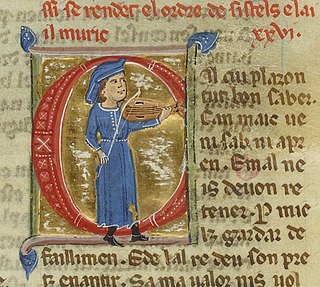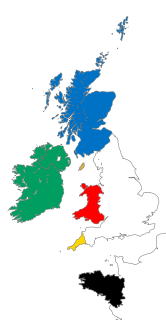Beast poetry, in the context of European literature and medieval studies, refers to a corpus of poems written in Latin from the 8th to the 11th century.
Medieval studies is the academic interdisciplinary study of the Middle Ages.
In linguistics, a corpus or text corpus is a large and structured set of texts. In corpus linguistics, they are used to do statistical analysis and hypothesis testing, checking occurrences or validating linguistic rules within a specific language territory.

Latin is a classical language belonging to the Italic branch of the Indo-European languages. The Latin alphabet is derived from the Etruscan and Greek alphabets and ultimately from the Phoenician alphabet.
Contents
These poems draw upon an ancient literary tradition of anthropomorphic animals dating back into antiquity and exemplified by Aesop. They are the immediate foundation for the flowering of Reynard literature that occurred in the 12th century. Elements from beast poetry have been adapted into subsequent works ranging from the Canterbury Tales to contemporary movies made with computer animation.

Classical antiquity is the period of cultural history between the 8th century BC and the 6th century AD centered on the Mediterranean Sea, comprising the interlocking civilizations of ancient Greece and ancient Rome known as the Greco-Roman world. It is the period in which Greek and Roman society flourished and wielded great influence throughout Europe, North Africa and Western Asia.

Aesop was a Greek fabulist and storyteller credited with a number of fables now collectively known as Aesop's Fables. Although his existence remains unclear and no writings by him survive, numerous tales credited to him were gathered across the centuries and in many languages in a storytelling tradition that continues to this day. Many of the tales are characterized by animals and inanimate objects that speak, solve problems, and generally have human characteristics.

Computer animation is the process used for digitally generating animated images. The more general term computer-generated imagery (CGI) encompasses both static scenes and dynamic images, while computer animation only refers to the moving images. Modern computer animation usually uses 3D computer graphics, although 2D computer graphics are still used for stylistic, low bandwidth, and faster real-time renderings. Sometimes, the target of the animation is the computer itself, but sometimes film as well.
Although it makes sense to discuss beast poetry as a single corpus of literature, they do not form a genre but rather:
Genre is any form or type of communication in any mode with socially-agreed-upon conventions developed over time. Genre is most popularly known as a category of literature, music, or other forms of art or entertainment, whether written or spoken, audio or visual, based on some set of stylistic criteria, yet genres can be aesthetic, rhetorical, communicative, or functional. Genres form by conventions that change over time as cultures invent new genres and discontinue the use of old ones. Often, works fit into multiple genres by way of borrowing and recombining these conventions. Stand-alone texts, works, or pieces of communication may have individual styles, but genres are amalgams of these texts based on agreed-upon or socially inferred conventions. Some genres may have rigid, strictly adhered-to guidelines, while others may show great flexibility.
The medieval Latin poems have few immediately discernible traits in common with one another. They were not the products of the same time or region. They range greatly in length... In structure, a beast poem can be as humble as one speech by a bird struggling to fly home safely... but then again it can intertwine a dozen main stories and another dozen visions, reminiscences, and divagations... The beast poems were created for many occasions and audiences... to be pored over in the library... read aloud, sung, and staged... Some were perhaps scripts for schoolroom performances... others for recitation in the refectory. [1]












